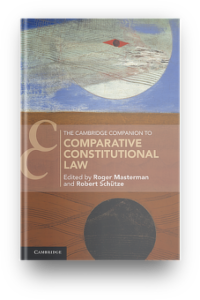This chapter examines the rise of the Independent Fiscal Institution (IFI) within the institutional structures of modern states. A new feature of the regulatory landscape in most of the jurisdictions where they are to be found, these institutions are designed to encourage fiscal responsibility on the government’s exercise of its budgetary responsibilities. The IFI often forms part of post- Global Financial Crisis (GFC) regulatory architecture 1 and is familiar to students of political economy and financial regulation. But even though their activities relate directly to government in a way that is less true of other post- GFC innovations, IFIs have been largely ignored in the specialist public law literature, a by- product of the tendency among public lawyers to overlook the political economy dimensions of their field. 2
This chapter seeks to bring the IFI into the public law fold. The project in general seeks to map the terrain for the benefit of public lawyers and to consider the institution from the perspective of public law. This chapter provides a fi ne- grained comparative analysis of two examples of the genre that were introduced at roughly the same time: the UK Office for Budget Responsibility (OBR) and the Australian Parliamentary Budget Offi ce (PBO). It examines the origins, duties and functions of the two institutions – but not at this point their effectiveness 3 – and the way they have developed since their introduction. Our focus is to situate these bodies within their constitutional and institutional environment. This aim has infl uenced the process of selection.
The chapter provides a detailed comparative analysis of the selected bodies, framed by a general discussion of the rise of the IFI as a distinctive fiscal and political institution. Our analysis of the OBR and the PBO shows how these bodies were set up for somewhat different, if overlapping, reasons, and that their responsibilities and functions are correspondingly distinctive, again overlapping. But it also suggests some underlying commonalities, the most important of which is that they offer a technocratic attempt at counterbalancing the short- term bandwidth of modern fiscal politics . On the basis of this observation, we argue that the IFI ought to be understood as an institutional expression of what we call intergenerational constitutional justice . It provides, that is, a technology by means of which the interests and concerns of future generations are given voice and forced upon the consciences of today’s decision makers.
1 See E. Ferran , N. Moloney , J.G. Hill and J.C. Coffee , Jr, The Regulatory Aftermath of
the Global Financial Crisis ( Cambridge University Press , 2012 ) ; J. Black , ‘ Paradoxes and
Failures: “New Governance” Techniques and the Financial Crisis ’ ( 2012 ) 75 Modern Law
Review 1037 .
2 See G.E. Metzger , ‘ Through the Looking Glass to a Shared Reflection: The Evolving
Relationship between Administrative Law and Financial Regulation ’ ( 2015 ) 78 Law &
Contemporary Problems 129 , 145 : ‘in the 1960s and 1970s … as financial regulation
dropped off the political and administrative [law] radar, it became more identified with
the business and private- law side of law schools … This academic division has meant that
scholars from each field often have limited familiarity with the analytic paradigms and
core concerns that dominate the other, further reinforcing their divergence.’
3 As such, we do not discount the possibility that IFIs in practice turn out to be window
dressing – examples of virtue signalling on the part of governments facing pressure from
bewildered citizenries post- GFC and looking to shore up (or restore) confidence in their
fiscal decision- making competence.
